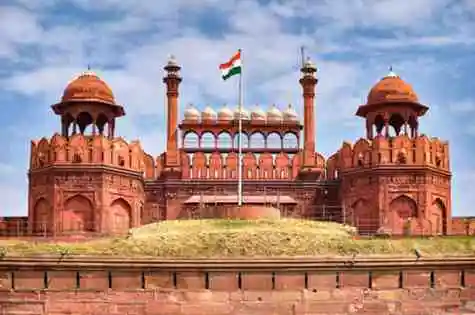The Red Fort, also known as Lal Qila, stands as one of the most iconic monuments in India. Located in the heart of Old Delhi, this architectural marvel is more than just a tourist attraction—it is a testament to the rich and complex history of the Indian subcontinent. Built during the zenith of the Mughal Empire, the Red Fort has witnessed centuries of political, cultural, and social transformation.In this blog post, we explore the history of the Red Fort, from its glorious inception to its enduring legacy in modern India.
—
Origins and Construction of the Red Fort
The story of the Red Fort begins with Mughal Emperor Shah Jahan, who ruled from 1628 to 1658. Known for his love of art and architecture—he also commissioned the Taj Mahal—Shah Jahan decided to move the capital of the Mughal Empire from Agra to Delhi. In 1638, he laid the foundation of a new fortified city called Shahjahanabad, the seventh city of Delhi.
To serve as the centerpiece of this new capital, he commissioned the construction of a grand palace-fortress, which would later become known as the Red Fort due to its massive red sandstone walls.
Key Facts about Construction :
Construction began: 1638
Completed: 1648
Architect: Ustad Ahmad Lahori (who also designed the Taj Mahal)
Materials: Red sandstone and marble
Area: Over 250 acres
The Red Fort was originally called Qila-e-Mubarak, meaning “The Blessed Fort,” and served as the main residence of the Mughal emperors for nearly 200 years.
—
Architectural Brilliance of the Red Fort
The Red Fort is a stunning example of Mughal architecture, blending Persian, Timurid, and Indian styles. It is surrounded by 2.5 km long red sandstone walls, with impressive gates such as the Lahori Gate (main entrance) and the Delhi Gate.
Major Attractions Inside the Red Fort :
Diwan-i-Aam (Hall of Public Audience) – where the emperor addressed the public.
Diwan-i-Khas (Hall of Private Audience) – where the emperor met dignitaries; famous for its once glittering Peacock Throne.
Rang Mahal – a palace adorned with mirrors and colorful paint, used by royal women.
Moti Masjid (Pearl Mosque) – a private mosque built by Aurangzeb.
Hayat Bakhsh Bagh (Life-Bestowing Garden) – a lush garden with marble pavilions and canals.
The fort’s layout emphasizes symmetry, open spaces, and water channels—known as Nahr-i-Bihisht or the Stream of Paradise—representing an Islamic vision of paradise on Earth.
—
The Red Fort Through the Ages
Mughal Decline
After the death of Aurangzeb in 1707, the Mughal Empire began to weaken. Although later emperors continued to reside in the Red Fort, their power dwindled. In 1739, Nadir Shah of Persia invaded Delhi and looted the fort, including the famed Peacock Throne
.British Rule
In 1857, the Indian Rebellion—also known as the First War of Independence—marked a major turning point. The British defeated the rebels and exiled the last Mughal emperor, Bahadur Shah Zafar, marking the end of Mughal rule.
The British took control of the Red Fort, destroying many structures inside and converting it into a military garrison. The fort lost much of its former glory during this period.
—
Red Fort in Independent India
The Red Fort reclaimed its place in history when India gained independence in 1947. On 15th August 1947, the first Prime Minister of India, Pandit Jawaharlal Nehru, hoisted the national flag from the ramparts of the Lahori Gate—a tradition that continues every year on Independence Day.
Today, the Red Fort stands not just as a monument of the past, but as a symbol of Indian independence and national pride.
—
Red Fort: A UNESCO World Heritage Site
In 2007, the Red Fort was designated a UNESCO World Heritage Site for its cultural and historical significance. The fort is maintained by the Archaeological Survey of India (ASI) and remains one of the most visited landmarks in the country.
The site also hosts the Red Fort Festival, showcasing India’s rich cultural heritage through music, dance, food, and crafts.
—
Visiting the Red Fort:
A Travel Tip
If you’re planning a trip to Delhi, a visit to the Red Fort is a must. Here are a few quick tips:
Timings: 9:30 AM to 4:30 PM (closed on Mondays)
Best time to visit : October to March (pleasant weather)
Nearest Metro Station: Chandni Chowk (Yellow Line)
Don’t miss the sound and light show held in the evenings, which narrates the fort’s history in an engaging way.
—
Conclusion
The Red Fort is more than just an architectural masterpiece—it is a living chronicle of India’s imperial past, colonial struggle, and journey to independence. From its opulent Mughal origins to its central role in modern Indian identity, the fort continues to inspire awe and admiration.
Whether you’re a history enthusiast, a student, or a traveler, exploring the history of the Red Fort offers deep insights into India’s cultural evolution and enduring legacy.
